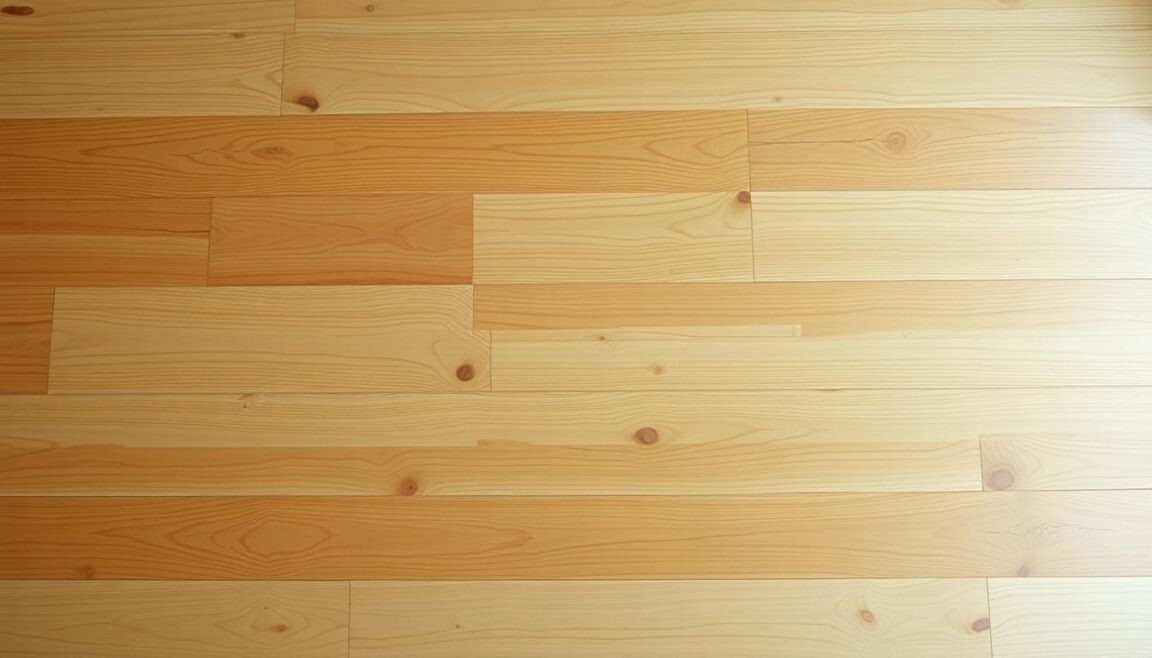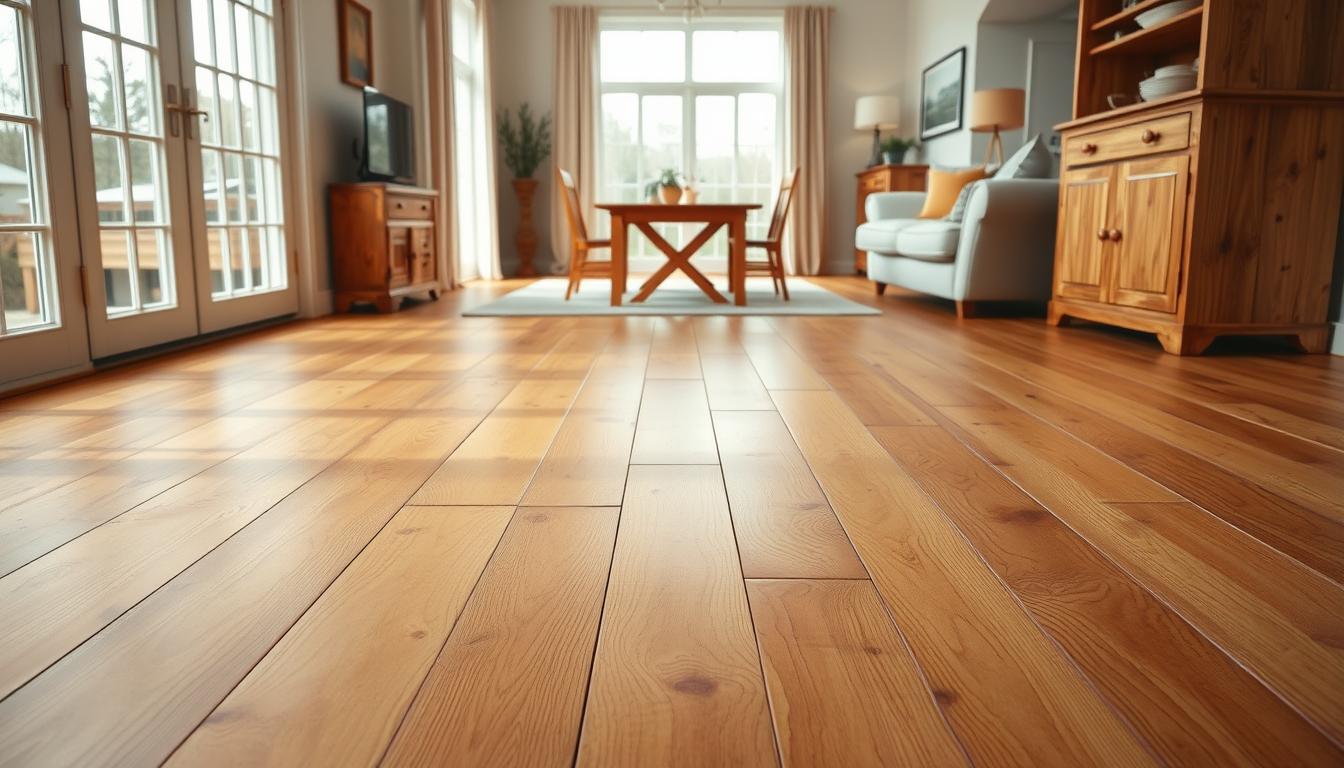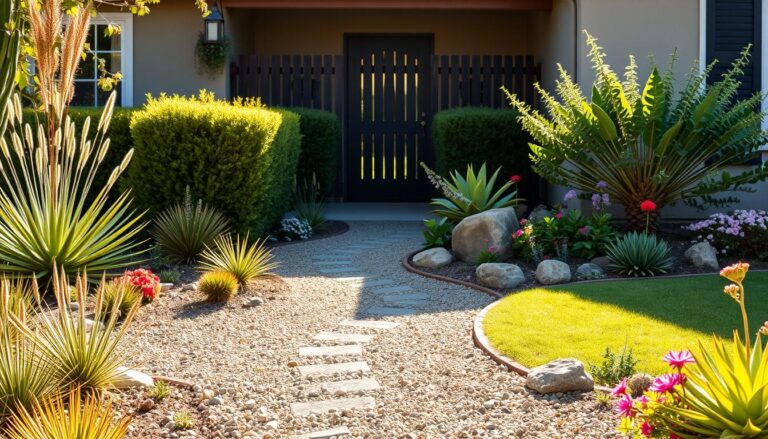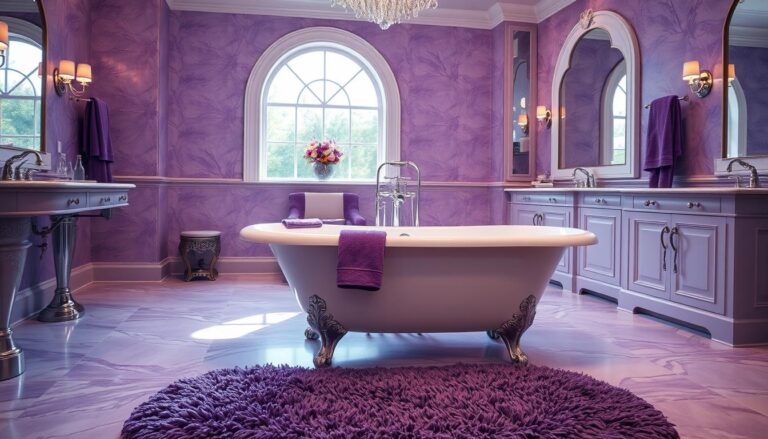Pine Flooring Pros Cons
As homeowners, we continually seek ways to enhance our living spaces while making informed decisions that fit our lifestyle and budget. One popular choice for homeowners is pine flooring, known for its aesthetic appeal and durability.
Before making a decision, it’s crucial to understand the advantages and disadvantages of pine flooring. In this guide, we’ll explore the key aspects of pine flooring, helping you make a well-informed decision.
We’ll walk you through everything you need to know, from the benefits to the potential drawbacks, ensuring you’re equipped to decide if pine flooring is right for your home.
Understanding Pine Flooring
The appeal of pine flooring lies in its natural beauty and the variety of options available. Pine flooring is known for its rustic charm and the warmth it brings to a room.
Types of Pine Used for Flooring
Pine flooring comes in several types, each with its unique characteristics. The most common types are yellow pine and white pine.
Yellow Pine vs. White Pine
Yellow pine is denser and has a more pronounced grain pattern compared to white pine. White pine, on the other hand, is softer and has a smoother texture.
Reclaimed Pine Options
Reclaimed pine is another popular option, offering a unique, weathered look. It is sourced from old buildings and can add a historical touch to a room.
- Yellow Pine: Dense with a pronounced grain
- White Pine: Softer with a smoother texture
- Reclaimed Pine: Unique, weathered look
Characteristics of Pine Wood
Pine wood is known for its softness and susceptibility to dents and scratches. However, it can be treated and finished to enhance its durability.
“Pine flooring, when properly maintained, can last for decades, offering a timeless appeal.”
Pine flooring is a versatile choice, offering a range of styles and finishes. Understanding the types of pine and their characteristics can help homeowners make an informed decision.
Pine Flooring Pros and Cons
To decide if pine flooring is right for our home, we must examine its benefits and drawbacks. Pine flooring is a popular choice among homeowners due to its unique characteristics.
Advantages of Pine Floors
Pine flooring offers several advantages, making it a desirable option for many.
Affordability and Value
Pine flooring is generally more affordable than other hardwood options, providing excellent value for the price.
Natural Beauty and Character
It adds a natural beauty and character to our home, with unique knots and grain patterns.
Eco-Friendly Benefits
Pine is a sustainable and renewable resource, making it an eco-friendly choice.

Disadvantages of Pine Floors
Despite its advantages, pine flooring also has some drawbacks.
Softness and Durability Issues
Pine is a softwood, which means it can be prone to scratches and dents, affecting its durability.
Maintenance Challenges
It requires regular maintenance to keep it looking its best, which can be time-consuming.
Potential for Discoloration
Pine flooring can discolor over time if not properly maintained or if exposed to excessive sunlight.
| Advantages | Disadvantages |
|---|---|
| Affordability | Softness |
| Natural Beauty | Maintenance Challenges |
| Eco-Friendly | Potential for Discoloration |
By understanding both the advantages and disadvantages of pine flooring, we can make a more informed decision about whether it’s the right choice for our home.
How to Install Pine Flooring
To achieve a beautiful and durable pine floor, follow these installation steps. Installing pine flooring can be a straightforward process if you are well-prepared.
Preparation Steps
Before installing pine flooring, it’s essential to prepare your site and materials.
Acclimating Your Pine
Acclimate your pine flooring to the environment where it will be installed. This involves leaving the flooring in the installation area for a few days to adjust to the temperature and humidity.
Subfloor Requirements
Ensure your subfloor is level, clean, and dry. Any irregularities or moisture issues can affect the installation and longevity of your pine flooring.
Installation Methods
There are several methods to install pine flooring, each with its advantages.
Nail-Down Technique
The nail-down technique involves securing the pine flooring to the subfloor using nails. This method is traditional and provides a strong hold.
Glue-Down Option
The glue-down option involves adhering the pine flooring to the subfloor using a strong adhesive. This method is effective for reducing squeaks and providing a stable surface.
Finishing Your Pine Floor
After installation, finishing your pine floor is crucial for its durability and appearance.
Sanding Tips
Sand your pine floor to smooth out any imperfections and to prepare it for finishing. Use progressively finer grits of sandpaper for the best results.
Sealing and Protecting
Apply a suitable sealant to protect your pine floor from wear and tear. Regular maintenance will also help extend its lifespan.
Making the Right Decision for Your Home
Now that we’ve explored the pros and cons of pine flooring, the installation process, and maintenance needs, it’s time to make an informed decision about whether pine flooring is right for your home.
When choosing pine flooring, consider factors like your lifestyle, budget, and personal preferences. If you’re looking for a cost-effective, eco-friendly option with a unique character, pine flooring might be an excellent choice.
To ensure your pine floors remain beautiful and durable, maintaining pine floors is crucial. Regular cleaning, refinishing, and protecting the floors from excessive moisture and sunlight will help extend their lifespan.
By weighing the advantages and disadvantages, and considering your specific needs, you can make a well-informed decision that suits your lifestyle and enhances the beauty of your home.







